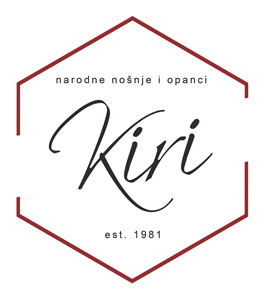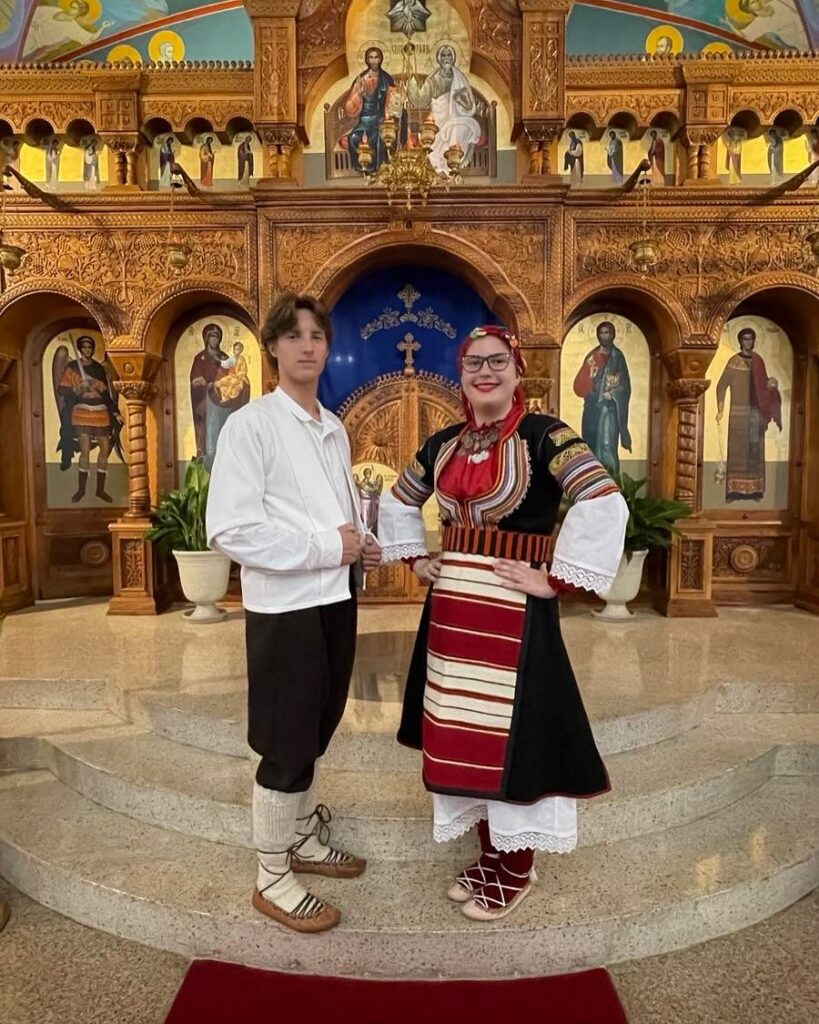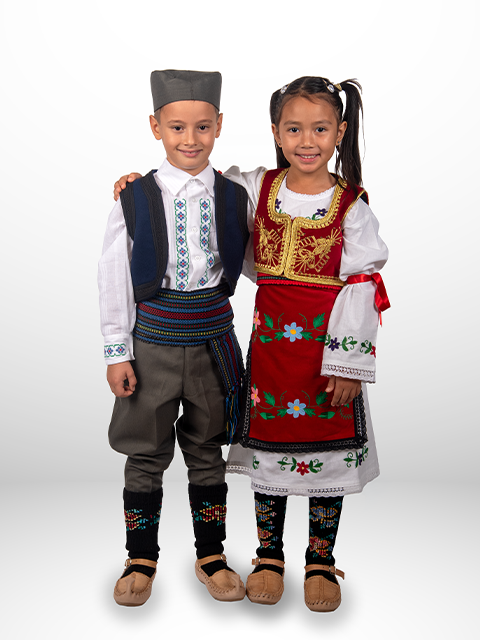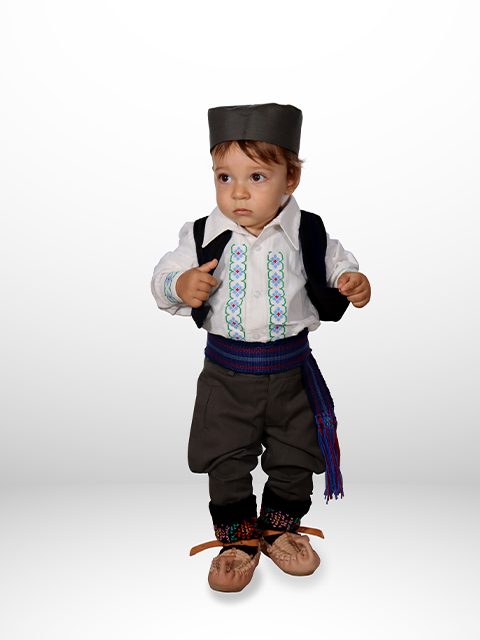Every culture carries its identity through music, art, and tradition, but few things preserve heritage as beautifully as traditional clothing. For Serbia, this means the vibrant and symbolic Serbian folklore costumes. These garments are not just stage outfits or collectibles—they represent centuries of history, artistry, and community spirit. Today, they remain an essential part of cultural events, weddings, festivals, and dance performances, while also inspiring modern fashion and design.
If you are searching for a way to connect with your roots, stand out on stage, or bring authenticity to your celebrations, Serbian folklore costumes are the perfect choice. In this article, we will explore the history, regional diversity, symbolism, and modern relevance of Serbian folklore costumes—and show you where you can buy authentic, handmade outfits today.
The Historical Roots of Serbian Folklore Costumes
The origins of Serbian folk costumes date back centuries, shaped by a combination of Slavic traditions, Ottoman influences, and local creativity. In rural communities, clothing was not just about function but also about identity. A person’s costume could reveal their region, marital status, and even social standing.
- Slavic traditions: Early garments were made from linen and wool, decorated with simple geometric embroidery.
- Ottoman influence: During centuries of Ottoman rule, costumes incorporated rich fabrics, metallic threads, and decorative elements.
- Christian heritage: Crosses, floral patterns, and symbolic motifs were often used as protective symbols stitched into garments.
By the 19th century, when national consciousness grew stronger, Serbian folklore costumes became a proud symbol of cultural identity. Many of these styles have survived nearly unchanged to this day, making them living history.
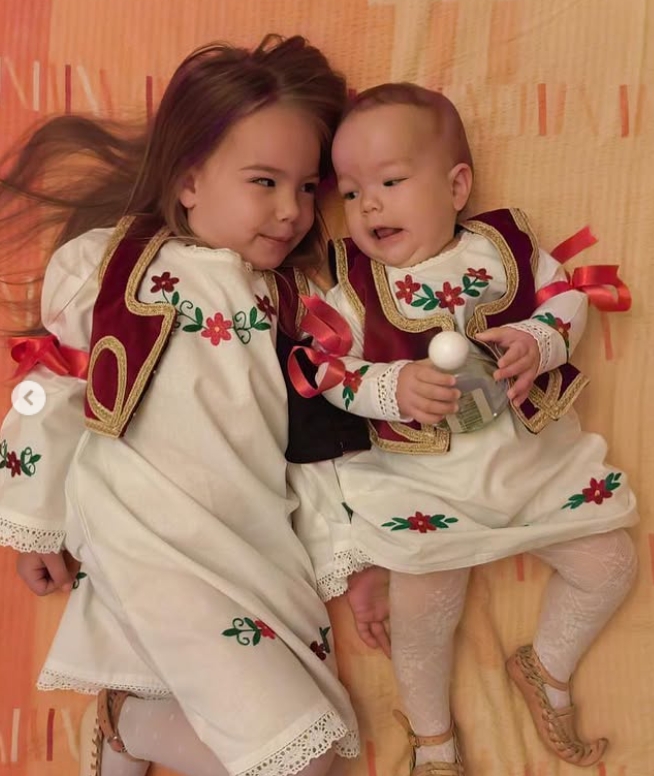
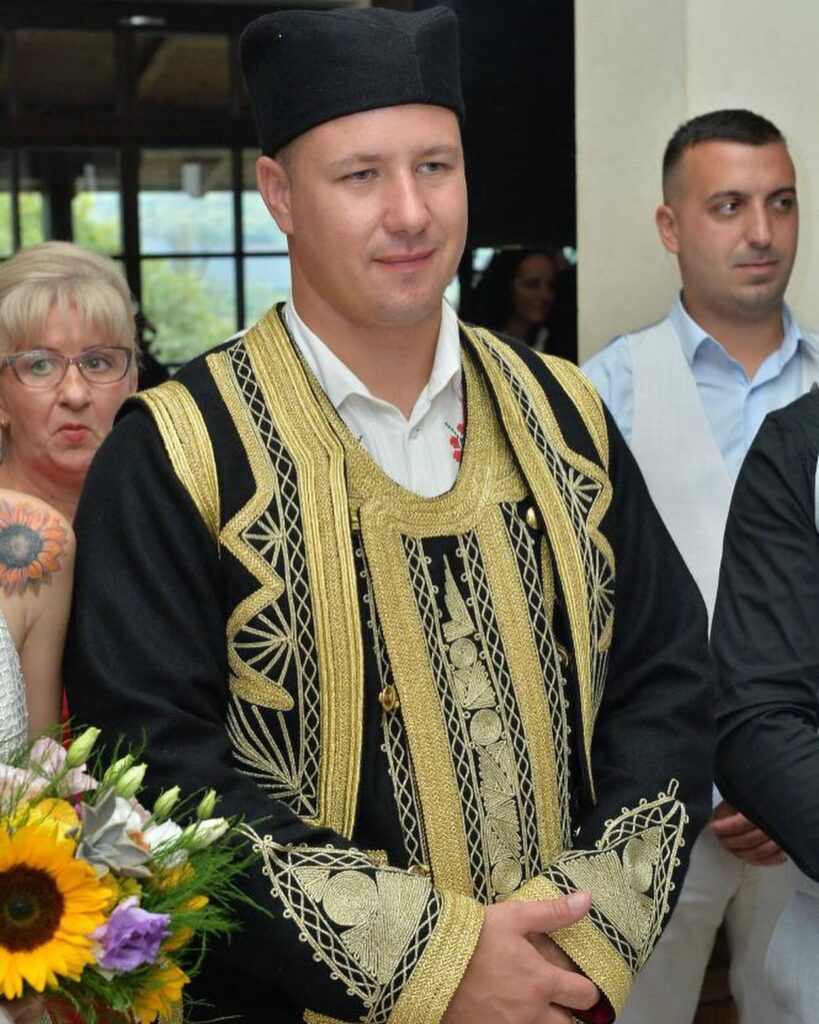
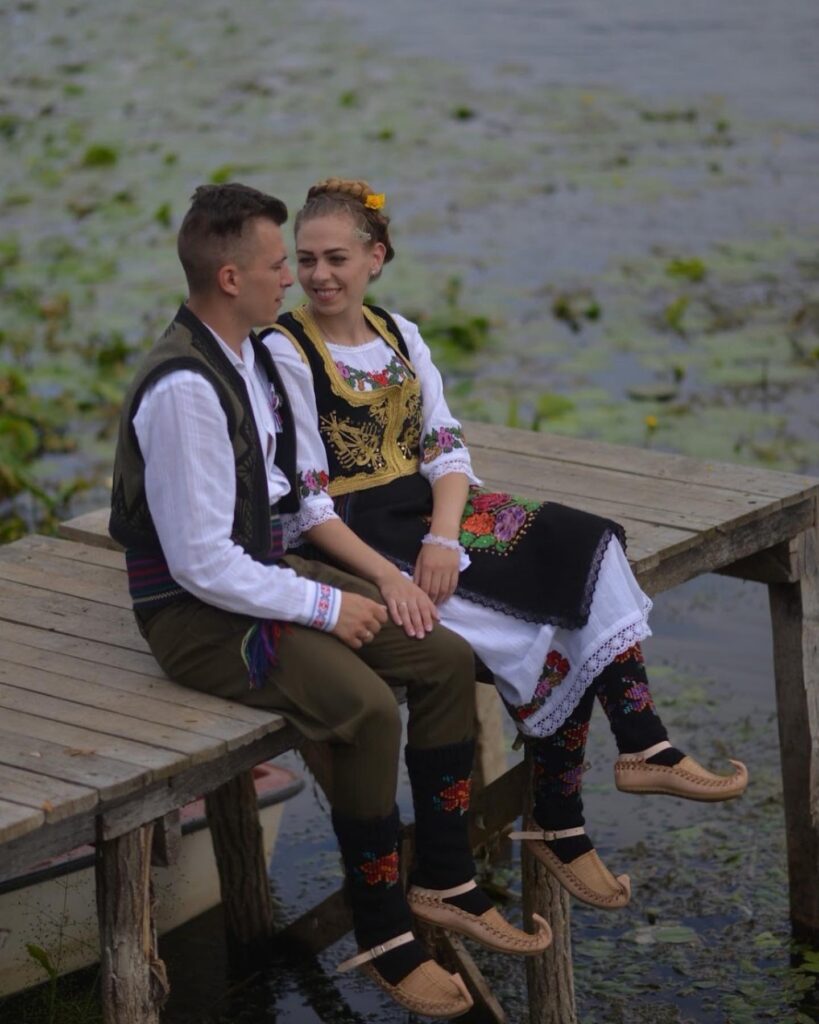
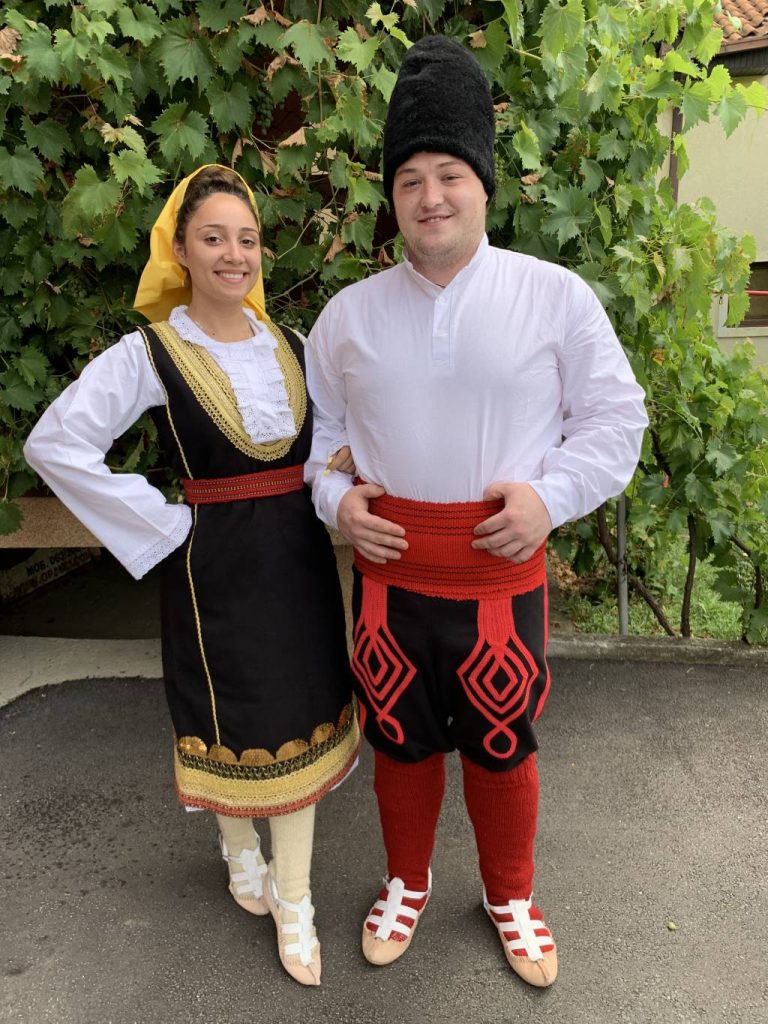
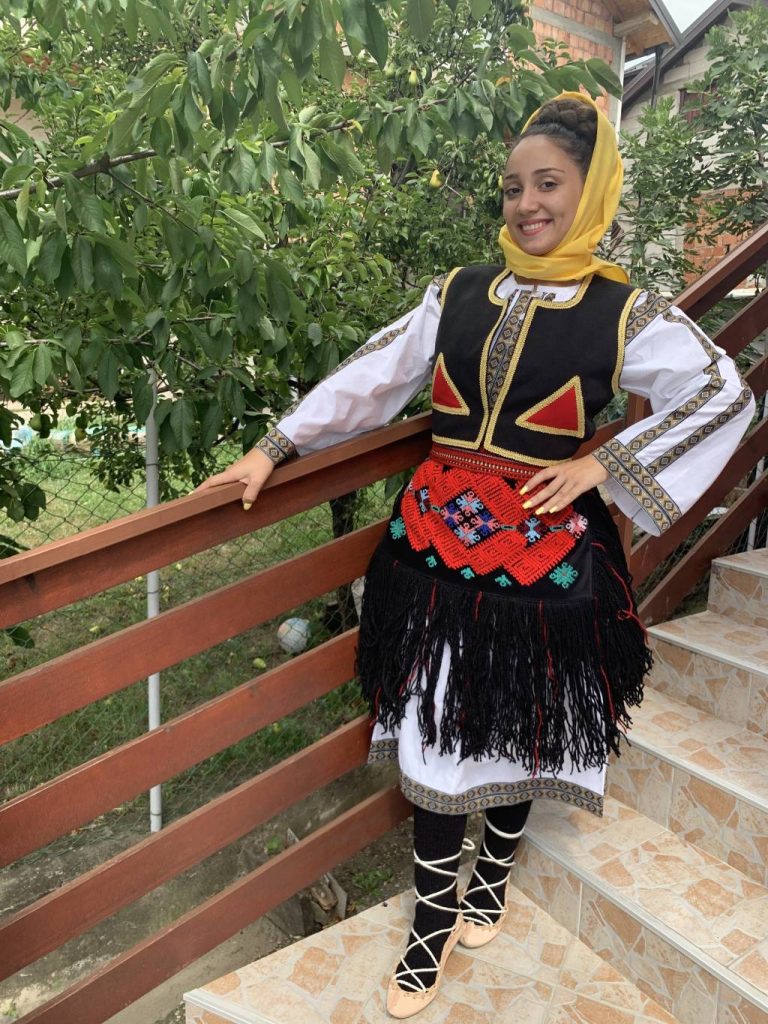
Key Elements of Serbian Folklore Costumes
While costumes differ from region to region, certain elements remain common throughout Serbia. Each piece has both functional and symbolic meaning.
For Men
- Opanci: Traditional leather shoes with curled tips, durable and designed for dancing.
- White linen shirts: Often long and worn with wide belts.
- Vests (jelek): Made of wool or velvet, richly embroidered with colorful patterns.
- Trousers (čakšire): Wide at the hips, narrow at the ankles, often dark-colored.
- Sashes and belts: Used not only as decoration but also for carrying knives or money.
For Women
- Long embroidered dresses or shirts (košulja): Usually white, with hand-stitched details at the sleeves and hem.
- Aprons (pregača): Colorful, often striped or with floral patterns.
- Woolen vests and jackets: Providing warmth and style.
- Jewelry and coins: Headpieces decorated with coins symbolized wealth and family heritage.
- Scarves and kerchiefs: Worn on the head, often with elaborate knots.
Each item was carefully handmade, with designs passed down through generations—meaning no two costumes were exactly alike.
Regional Variations in Serbian Folklore Costumes
One of the most fascinating aspects of Serbian costumes is their diversity. Each region developed unique styles, fabrics, and colors, reflecting local traditions and environments.
Šumadija
The heart of Serbia, Šumadija costumes are some of the most recognizable. Men wear white wool trousers with embroidered vests, while women are known for their richly decorated aprons and colorful sashes.
Vojvodina
In northern Serbia, costumes show Hungarian and Austrian influence. Women wear wide skirts with lace and floral embroidery, while men’s costumes are simpler, with straight trousers and hats.
Kosovo and Metohija
Costumes from this region are among the most ornate. Women’s dresses are heavily embroidered with gold and silver thread, while men often wear richly decorated wool vests.
Eastern Serbia
Known for bright colors and bold patterns, Eastern Serbian costumes often feature multiple layers of skirts and aprons.
Western Serbia
Here, darker tones dominate, with heavy woolen garments suited for mountain climates.
Each costume tells a local story, making Serbian folklore costumes a living map of cultural diversity.
The Symbolism Behind the Colors and Patterns
Beyond their beauty, costumes carry deep meaning. Every color, motif, and stitch had a purpose:
- Red: Symbolized life, energy, and protection. Often used in embroidery to ward off evil.
- Black: Represented strength and resilience, commonly found in men’s garments.
- White: Associated with purity, weddings, and sacred rituals.
- Geometric patterns: Represented the cycle of life, fertility, and harmony.
- Floral motifs: Symbolized love, family, and prosperity.
This hidden language of design made costumes not only visually striking but also deeply spiritual.
Serbian Folklore Costumes in Modern Times
Today, Serbian folklore costumes remain a vital part of cultural life.
- Folklore dance ensembles: Every major city in Serbia has cultural groups performing traditional kolo dances in authentic costumes.
- Festivals and celebrations: Costumes are proudly worn at weddings, slavas (family patron saint celebrations), and village festivals.
- Diaspora communities: Serbs abroad keep traditions alive by wearing folklore costumes at international events and cultural gatherings.
- Fashion inspiration: Modern designers often borrow patterns, embroidery styles, and fabrics from folk costumes, blending them into contemporary fashion.
Wearing a folklore costume today is not only about honoring the past but also about celebrating living traditions.
Why Buy Serbian Folklore Costumes Today?
Folklore costumes are no longer just historical garments. They are perfect for:
- Performances and dance groups: Authentic costumes bring power and elegance to stage presentations.
- Cultural festivals and weddings: Nothing captures the spirit of tradition like wearing handmade clothing.
- Heritage collections: For families who want to preserve Serbian culture for future generations.
- Unique gifts: A traditional costume is one of the most meaningful gifts you can give to someone with Serbian roots.
Buying Serbian folklore costumes today means carrying a legacy of artistry, history, and culture into the modern world.
Why Serbian Folklore Costumes Are More Than Fashion
Unlike modern fashion that changes with the seasons, folklore costumes have timeless value. They are:
Educational: Teaching younger generations about heritage.
Performative: Essential for dance, music, and theater.
Spiritual: Many costumes carry protective symbols and blessings.
Artistic: A masterpiece of handmade craftsmanship.
Owning or wearing a Serbian folklore costume is like carrying a piece of history on your shoulders.
Where to Buy Serbian Folklore Costumes
If you are searching for authentic Serbian folklore costumes, our store offers carefully crafted garments made by skilled artisans. Each piece is created with respect for tradition, ensuring that you receive not just a costume but a cultural treasure.
We specialize in:
- Handmade men’s and women’s costumes
- Complete sets for folklore dance groups
- Accessories such as aprons, sashes, and traditional opanci
- Custom orders for weddings, festivals, and performances
When you buy from us, you are not just getting clothing—you are supporting artisans, keeping tradition alive, and receiving a piece of Serbian heritage you can treasure for a lifetime.
From their historical roots to their modern-day significance, Serbian folklore costumes represent one of the most beautiful cultural traditions in the Balkans. They are more than decorative garments—they are living symbols of identity, artistry, and continuity.
By wearing or owning a costume, you connect with centuries of history and become part of a tradition that continues to inspire pride and joy. Whether displayed on stage, at festivals, or in personal collections, Serbian folklore costumes remain timeless treasures worth celebrating.
If you are ready to celebrate Serbian culture in the most authentic way, explore our collection today and find the perfect costume that connects you with tradition.
